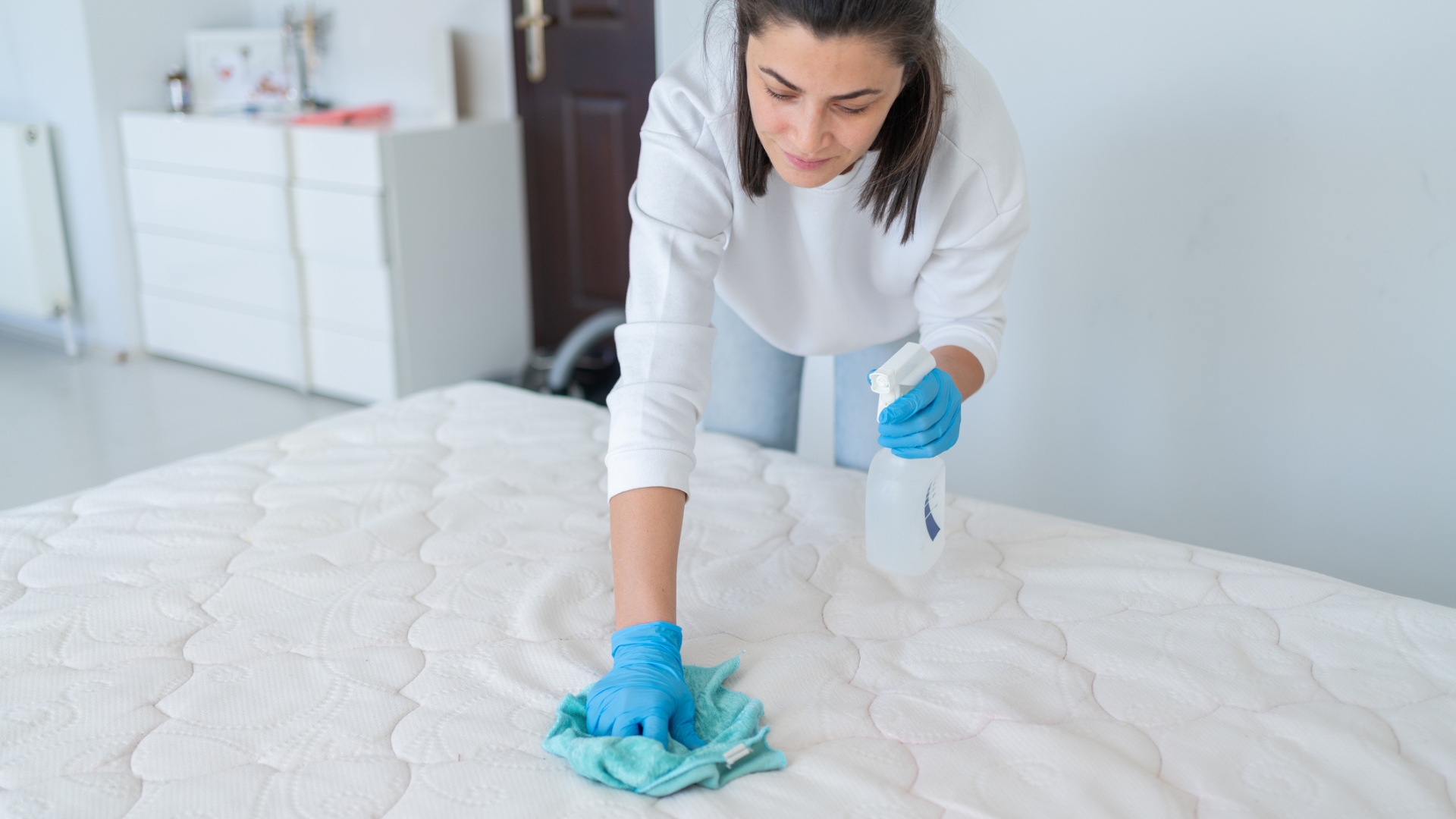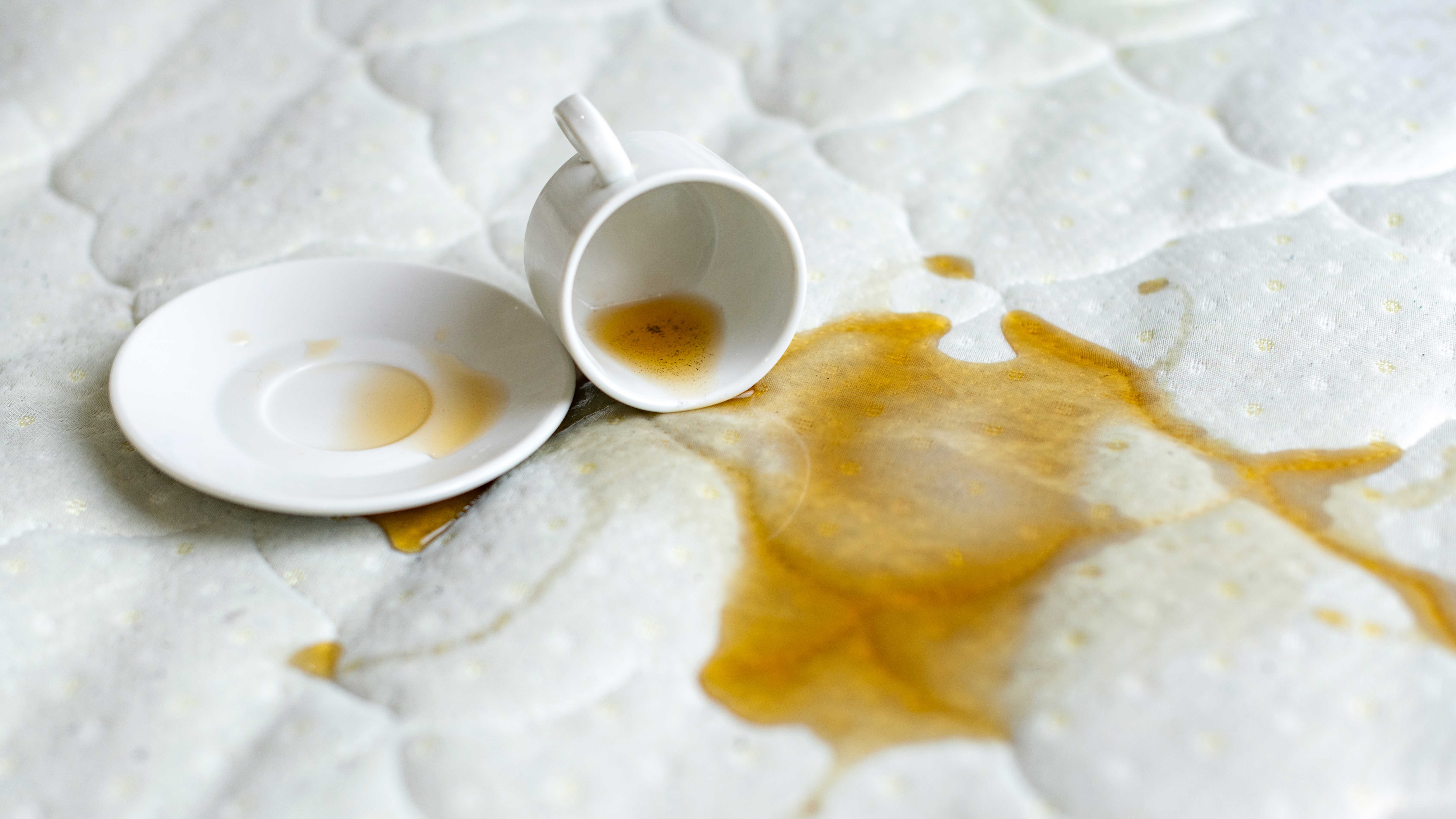I’m a mattress cleaning expert — this is when you should rotate, vacuum and deep clean your bed in 2025
Your complete guide to maintaining and cleaning your mattress in 2025.

We spend more than one-third of our lives in bed, so it’s important to invest in a really good mattress. But once you’ve got that new bed, you also need to take care of it with a regular mattress cleaning schedule in order to get the best out of your bed.
If you’ve invested in one of the best mattresses for your sleep needs, it will require regular maintenance in order to keep it in tip top condition. Without proper care, mattresses can become breeding grounds for dust mites, mold, allergens, and even lose their supportive properties. Regular mattress maintenance isn't just about cleanliness (although that's super important), it’s also about ensuring that it provides the comfort and support you need for night after night of good sleep.
As a mattress cleaning expert, I'm going to share with you everything you need to know about when you should be rotating, vacuuming, and deep cleaning your bed over the coming year so you can protect your investment and guarantee a healthier sleep environment throughout 2025 and beyond.
Monthly mattress cleaning tasks
The good news is that keeping your mattress clean doesn't have to be labor-intensive all the time. Here are the quick and easy tasks that you should complete on a monthly basis.
1. Vacuum Your Bed
Vacuuming your mattress regularly is a must. As we sleep, we shed thousands of dead skin cells, which accumulate in our mattresses; this creates an ideal environment for dust mites, which can trigger allergies and asthma. We also sweat, release natural body oils and if you like a little midnight snack in bed, you may also be prone to leaving behind crumbs.
Vacuuming removes these skin cells, dust mites, allergens and other debris that if left to build up would cause staining, unpleasant odors and even the breakdown of your mattresses' supportive layers. You don't need a special vacuum cleaner for your mattress; just use the upholstery attachment and move in slow, overlapping strokes, paying attention to the seams and crevices where dust and debris accumulate.
2. Spot clean stains

Whenever you see a stain, it's crucial to treat it immediately. Fresh stains are easier to remove than set-in ones. Get into the habit of inspecting your mattress for any staining every month and spot treat the area. To spot treat mattress stains, use a mixture of mild detergent and water and apply it to the area with a clean cloth or paper towel.
My top tip is to use a spray bottle as this ensures even coverage and doesn't risk over-saturating the mattress, which can then lead to mold growth within your mattress. Always remember to blot the area rather than scrubbing it, as this can cause the stain to go deeper into the mattress fibers. Keep blotting until your cloth or paper towel comes back dry. Allow to fully dry before replacing your bed sheets. Depending on the severity of the stain, you may have to do this a couple of times before it's fully gone.
3. Deodorize using baking soda
If you want to freshen up your mattress and get rid of any unpleasant smells, simply head to the kitchen and get some baking soda from your pantry. This simple household staple is a must when it comes to cleaning mattresses as it can help to remove odors and even lift stains by breaking down the enzymes.
To do this, sprinkle a layer of baking soda over the surface of your mattress after vacuuming. I find using a flour sifter is a really good way to get even coverage. Leave for at least four hours (the longer the better) as this allows time for the baking soda to penetrate the fibers and neutralize odors. Once the baking soda has worked its magic, vacuum the surface again to remove all the powder. If you want, you can also add a few drops of essential oils for a fresher smell.
Mattress cleaning tasks — every three months
Here are the tasks you should perform every three months to keep your mattress in great shape. You may want to set a reminder in your phone to keep track of when you last completed these tasks.
1. Rotate your mattress
Rotating your mattress is the best way to prevent sagging and body impressions from forming. By rotating your mattress it ensures even weight distribute and wear across the surface, which doesn’t just extend the lifespan of your mattress but also helps ensure consistent comfort and support. You should rotate your mattress every three months — although if your mattress is new, do this monthly for the first three months so that it has time to settle.
To rotate your mattress, turn it 180 degrees so that the head end is now at the foot of the bed. Unless otherwise stated, you should never flip your mattress, as memory foam, hybrid, and latex mattresses are made using layers, with the supportive base layer at the bottom. These layers work together to offer the right amount of comfort and support, so if you flip the bed, it will feel super uncomfortable and also risk damaging the mattress.
2. Wash your mattress protector

One of the easiest ways to maintain the good health of your mattress is to invest in one of the best mattress protectors. A mattress protector acts as a barrier between you and your mattress, stopping any spills, accidents, and sweat from seeping into your mattress. This also makes it easier to clean as most mattress protectors are machine washable.
Mattress protectors can also help create a barrier against dust mites, bed bugs, and allergens. You should wash your mattress protector every three months in warm water with a small amount of mild laundry detergent. Tumble dry on low heat, as high heat can damage the waterproof properties, and ensure it's fully dry before putting it back on the bed.
Mattress cleaning tasks — every six months
There are certain mattress cleaning tasks that you should aim to tick off your to-do list every six months. They are more time consuming, but the good news is that you don't have to do them too often.
1. Deep clean your mattress
Giving your mattress a deep clean is essential and time consuming, but only needs to be done every six months. Over time your mattress accumulates dead skin cells, dust mites, sweat, and other allergens that vacuuming alone can't fully remove. Without a mattress protector, particles can penetrate deep into the layers of your mattress, potentially causing allergies and affecting sleep quality.
Avoid steam cleaning a memory foam mattress as the extreme heat can damage the damage the structure of the foam.
The best way to deep clean your mattress is by steam cleaning. Steam cleaning your mattress can help kill bacteria and remove any dust mites that may be lurking. After steam cleaning, always allow your mattress to fully dry before putting your sheets back on; otherwise, you risk mold and mildew growth. This is a long process, so make sure you give yourself plenty of time, although you can speed up drying time by opening all windows and doors or using fans.
2. Wash your pillows
In addition to deep cleaning your mattress, ensuring your pillows are washed every six months can have a huge impact on how well you sleep. Pillows can accumulate body oils, saliva, dead skin cells, and more, which leads to staining and even lumpy, uneven pillows. To properly clean your pillows, check the specific instructions for your pillow, but most synthetic pillows can be machine washed.
Down or feather pillows require special care. Always ensure your pillows are fully dried before using them, and if you use a tumble dryer, add two tennis balls or dryer balls to prevent clumping and speed up the drying process. Clean pillows will help keep your pillows supportive and also reduce allergens and bacteria.
Mattress cleaning FAQs
Do you need to buy a specialist mattress cleaning machine?
While specialist mattress cleaning machines can be effective, they're not essential. In fact, everything you need to keep your mattress clean is usually already in your home. A regular vacuum cleaner is fine; just make sure that you use the upholstery attachment as this isn't just more effective at removing dust, dead skin cells, and allergens, but it can also help to protect the fabric on your mattress. You can also use baking soda to deodorize your mattress and a cleaning solution of water and mild detergent along with clean cloths or paper towels for tackling any stains.
How often should you wash your bedding?

You should wash your bedding at least once a week to maintain optimal hygiene. Doing this weekly will prevent the accumulation of dead skin cells, dust mites, and bacteria and also keep your bed smelling fresh and clean. Those with allergies or pets may want to wash and change their bedding more frequently to maintain a clean and comfortable sleeping environment. And likewise during hot weather or if there's any illness to keep bacteria from building up. You should also wash your pillows, comforters, and duvets at least once every six months to keep them in the best condition.
Do you need to clean your bed frame too?
Cleaning your bed frame is an essential but often overlooked aspect of mattress maintenance. Dust, allergens, and bugs can accumulate in the crevices of your bed frame, especially if you have a wooden or upholstered design. Regular cleaning of the frame should include dusting or vacuuming the frame weekly, with a more thorough clean every month. If you have a wooden frame, always use an appropriate wood cleaner to prevent damage to the finish. Upholstered frames need regular vacuuming and spot cleaning, while metal frames should be wiped down with a damp cloth to avoid the buildup of dust.

Rachael is a freelance journalist based in South Wales who writes about lifestyle, travel, home and technology. She also reviews a variety of products for various publications including Tom’s Guide, CreativeBloq, IdealHome and Woman&Home. When she’s not writing and reviewing products she can be found walking her Sealyham and West Highland terrier dogs or catching up on some cringe-worthy reality tv.
